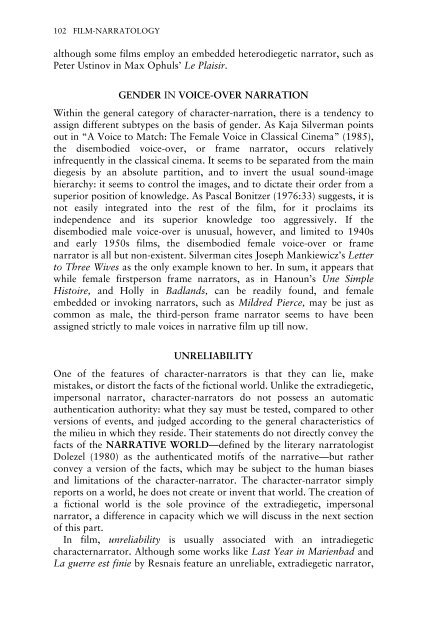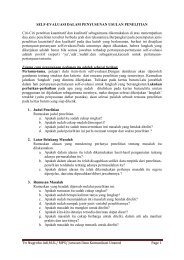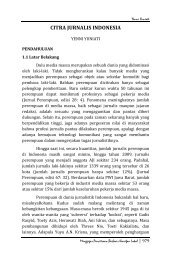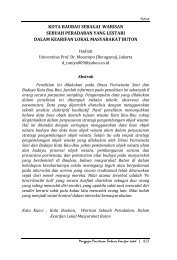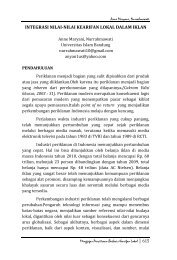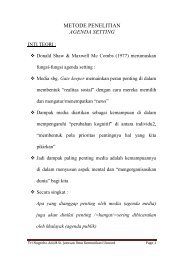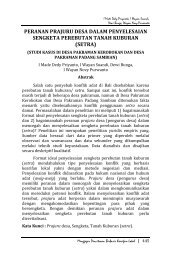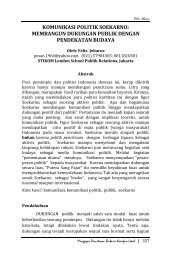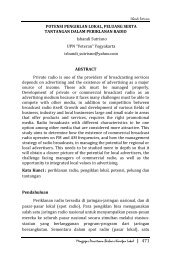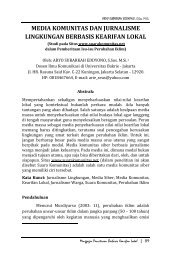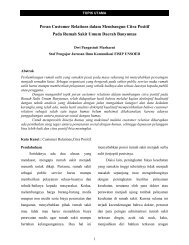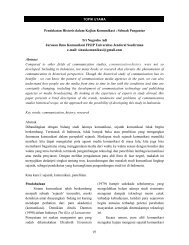New Vocabularies in Film Semiotics
New Vocabularies in Film Semiotics
New Vocabularies in Film Semiotics
Create successful ePaper yourself
Turn your PDF publications into a flip-book with our unique Google optimized e-Paper software.
102 FILM-NARRATOLOGY<br />
although some films employ an embedded heterodiegetic narrator, such as<br />
Peter Ust<strong>in</strong>ov <strong>in</strong> Max Ophuls’ Le Plaisir.<br />
GENDER IN VOICE-OVER NARRATION<br />
With<strong>in</strong> the general category of character-narration, there is a tendency to<br />
assign different subtypes on the basis of gender. As Kaja Silverman po<strong>in</strong>ts<br />
out <strong>in</strong> “A Voice to Match: The Female Voice <strong>in</strong> Classical C<strong>in</strong>ema” (1985),<br />
the disembodied voice-over, or frame narrator, occurs relatively<br />
<strong>in</strong>frequently <strong>in</strong> the classical c<strong>in</strong>ema. It seems to be separated from the ma<strong>in</strong><br />
diegesis by an absolute partition, and to <strong>in</strong>vert the usual sound-image<br />
hierarchy: it seems to control the images, and to dictate their order from a<br />
superior position of knowledge. As Pascal Bonitzer (1976:33) suggests, it is<br />
not easily <strong>in</strong>tegrated <strong>in</strong>to the rest of the film, for it proclaims its<br />
<strong>in</strong>dependence and its superior knowledge too aggressively. If the<br />
disembodied male voice-over is unusual, however, and limited to 1940s<br />
and early 1950s films, the disembodied female voice-over or frame<br />
narrator is all but non-existent. Silverman cites Joseph Mankiewicz’s Letter<br />
to Three Wives as the only example known to her. In sum, it appears that<br />
while female firstperson frame narrators, as <strong>in</strong> Hanoun’s Une Simple<br />
Histoire, and Holly <strong>in</strong> Badlands, can be readily found, and female<br />
embedded or <strong>in</strong>vok<strong>in</strong>g narrators, such as Mildred Pierce, may be just as<br />
common as male, the third-person frame narrator seems to have been<br />
assigned strictly to male voices <strong>in</strong> narrative film up till now.<br />
UNRELIABILITY<br />
One of the features of character-narrators is that they can lie, make<br />
mistakes, or distort the facts of the fictional world. Unlike the extradiegetic,<br />
impersonal narrator, character-narrators do not possess an automatic<br />
authentication authority: what they say must be tested, compared to other<br />
versions of events, and judged accord<strong>in</strong>g to the general characteristics of<br />
the milieu <strong>in</strong> which they reside. Their statements do not directly convey the<br />
facts of the NARRATIVE WORLD—def<strong>in</strong>ed by the literary narratologist<br />
Dolezel (1980) as the authenticated motifs of the narrative—but rather<br />
convey a version of the facts, which may be subject to the human biases<br />
and limitations of the character-narrator. The character-narrator simply<br />
reports on a world, he does not create or <strong>in</strong>vent that world. The creation of<br />
a fictional world is the sole prov<strong>in</strong>ce of the extradiegetic, impersonal<br />
narrator, a difference <strong>in</strong> capacity which we will discuss <strong>in</strong> the next section<br />
of this part.<br />
In film, unreliability is usually associated with an <strong>in</strong>tradiegetic<br />
characternarrator. Although some works like Last Year <strong>in</strong> Marienbad and<br />
La guerre est f<strong>in</strong>ie by Resnais feature an unreliable, extradiegetic narrator,


